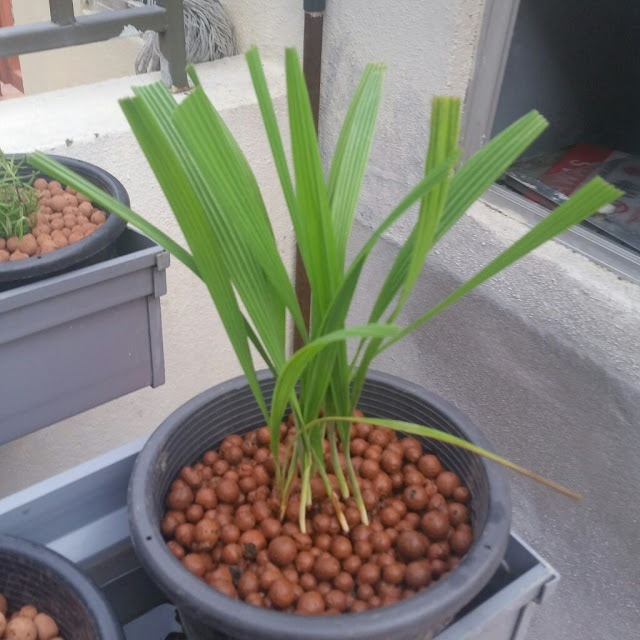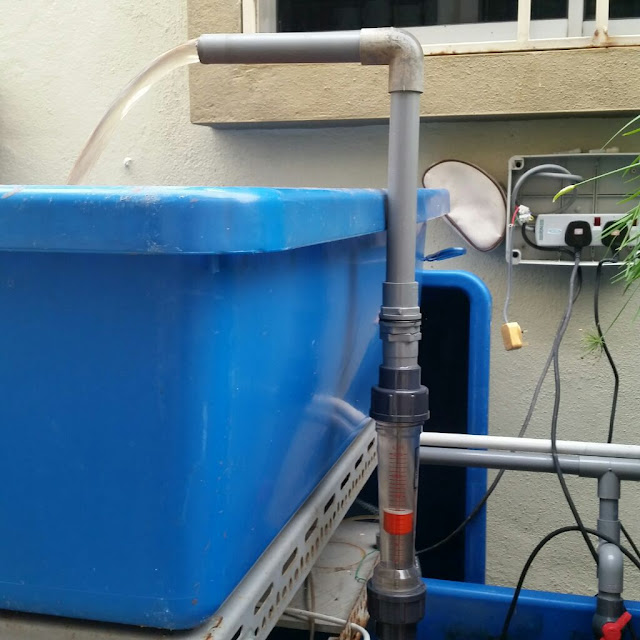Replacing the single pump with two smaller unit that consume less power and making it simpler for water to the growbed. The current pump that I use has excess capacity that wasted by diverting it away from growbed, this only increase the power requirement of my CRAFTS set.
So the Resun Penguin 4500 has to go out and in its place are two smaller pump that I have laying around doing nothing. I'll use these two pump until it fail and then will replace with a more efficient pump that I can get later on.
The EHK 105 pump above feed the two right growbed and below the Astro 2000 will feed the left two.
I remove the timer and will run the pump 24/7, evaluating to stop running the aerator pump at night if the two pump can supply enough oxygen to the fish.
I may put the aerator on timer as a backup if the water pump fails. However for this next few weeks I'll let it run on photo cell control which only switches it on at dusk.
Will see how it goes.
So the Resun Penguin 4500 has to go out and in its place are two smaller pump that I have laying around doing nothing. I'll use these two pump until it fail and then will replace with a more efficient pump that I can get later on.
The EHK 105 pump above feed the two right growbed and below the Astro 2000 will feed the left two.
I remove the timer and will run the pump 24/7, evaluating to stop running the aerator pump at night if the two pump can supply enough oxygen to the fish.
I may put the aerator on timer as a backup if the water pump fails. However for this next few weeks I'll let it run on photo cell control which only switches it on at dusk.
Will see how it goes.


































































